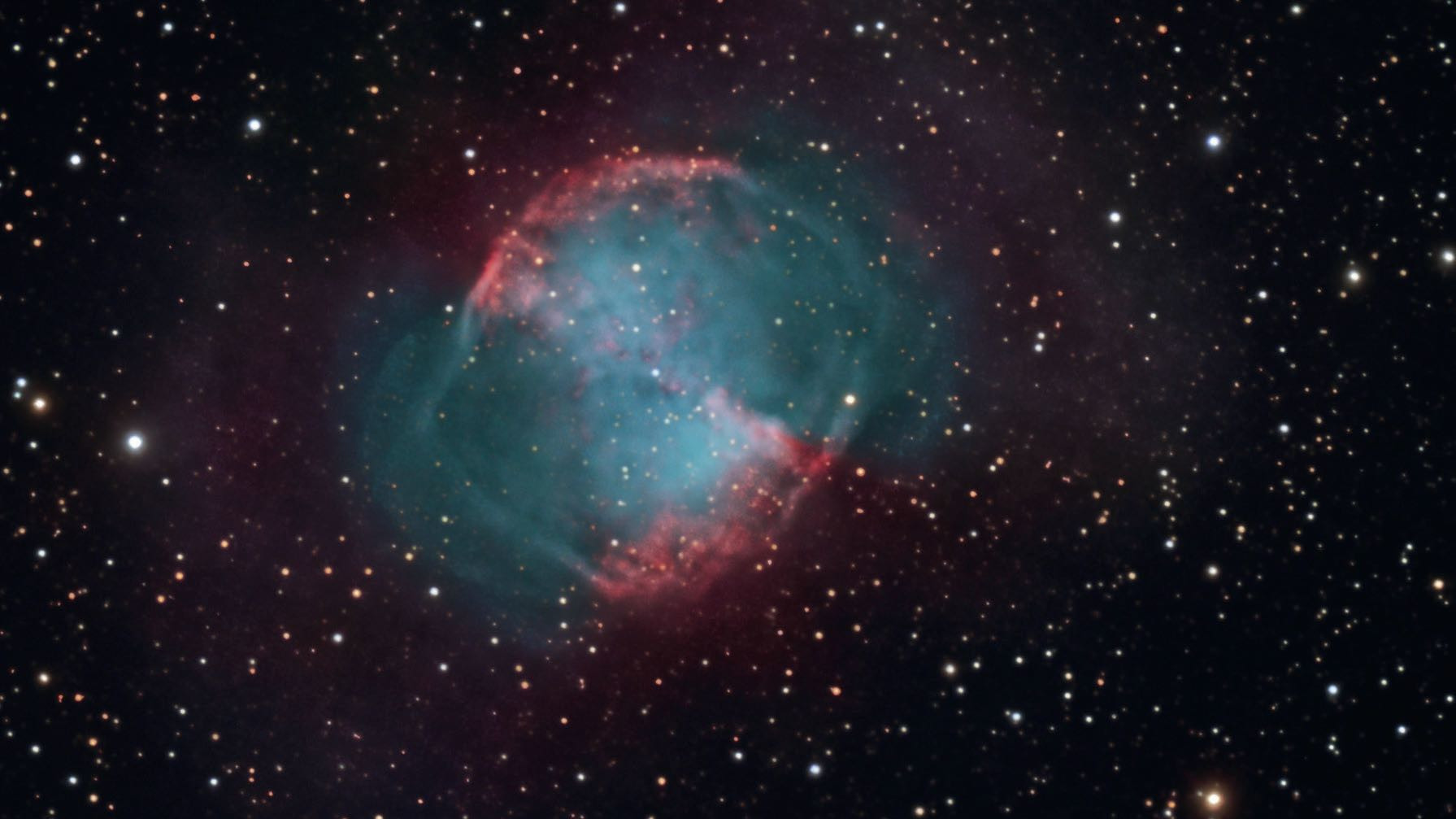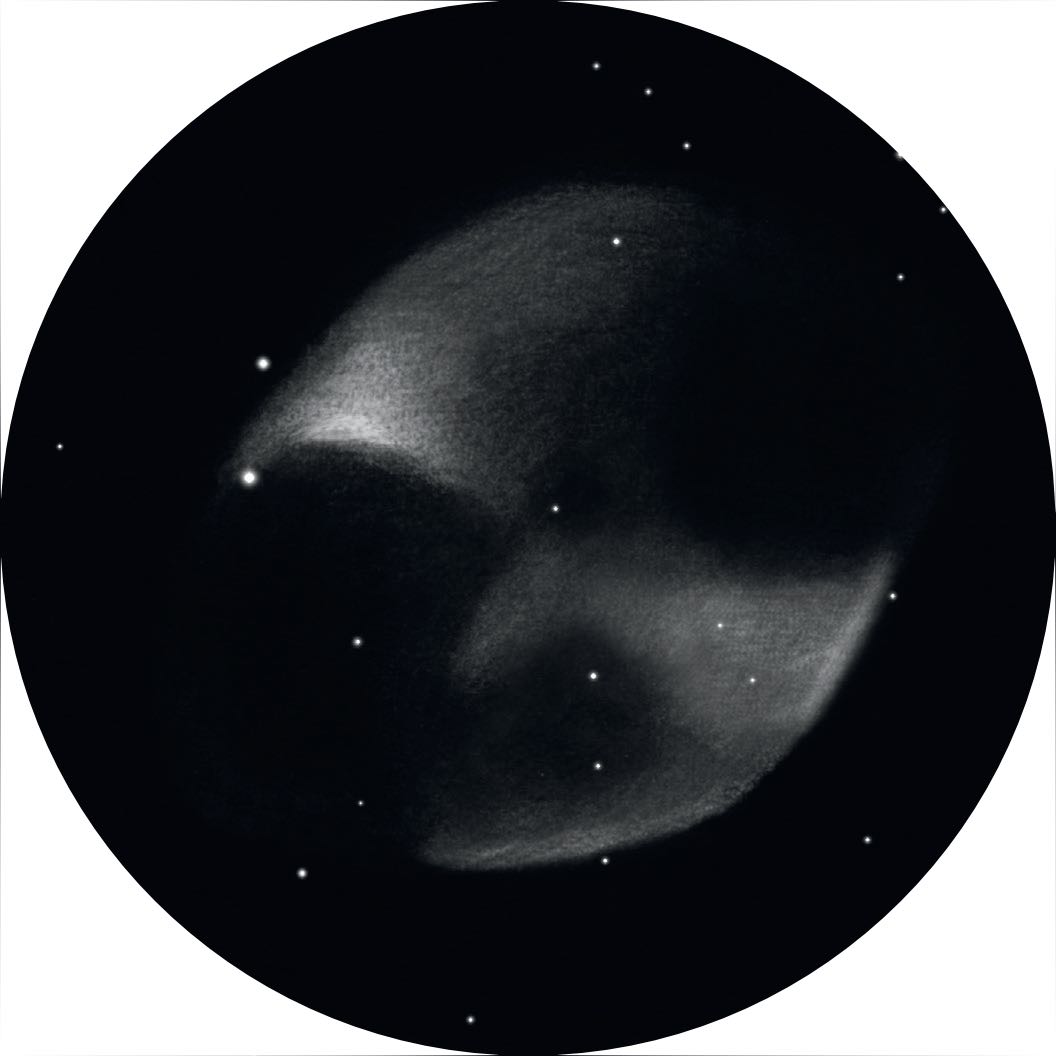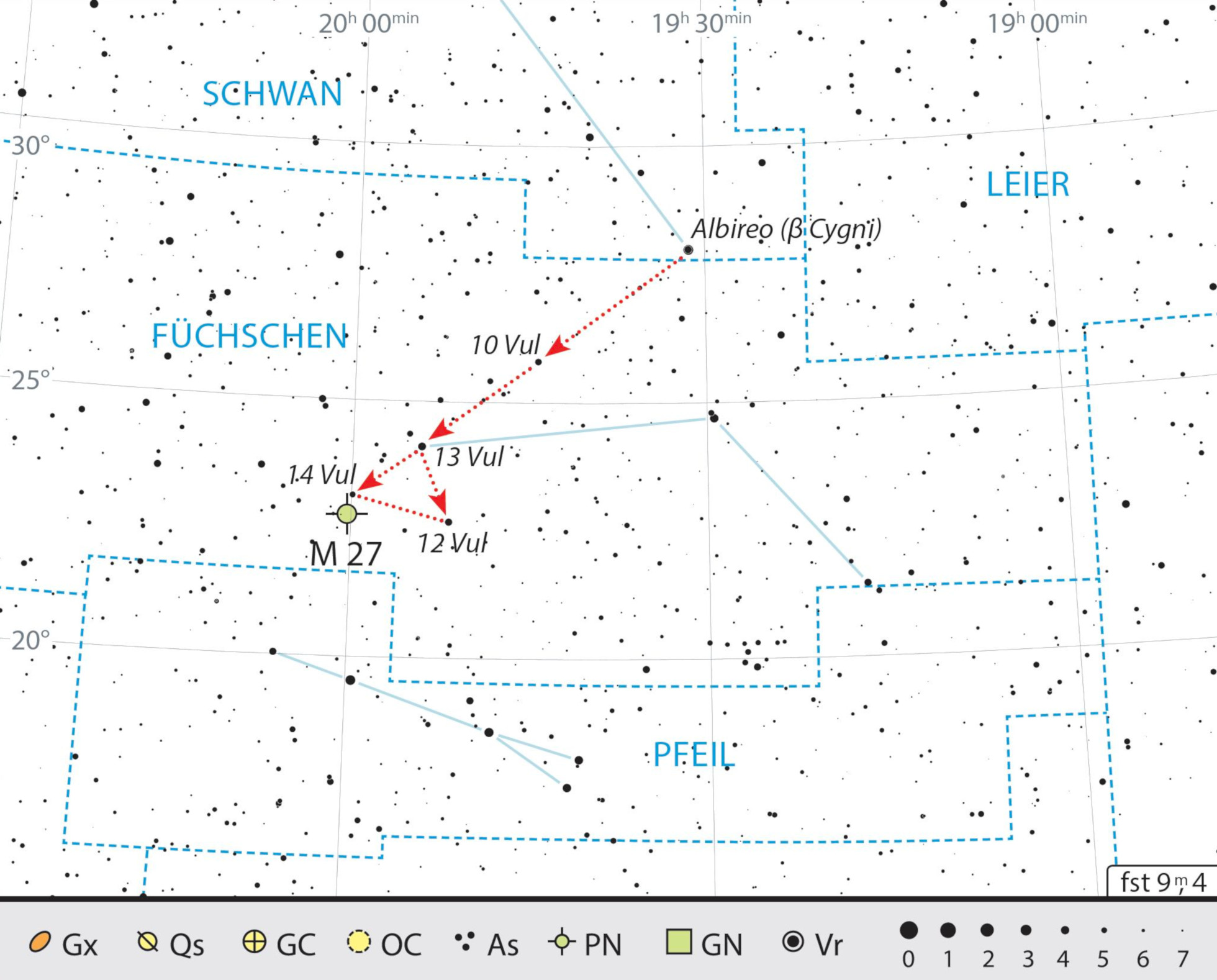Messier 27 – a dumbbell in the summer night sky
Using a UHC filter and a bit of imagination you can even witness the dumbbell effect when observing this planetary nebula in Vulpecula.
 The planetary nebula M27 can also be a worthwhile object for city astronomers. If you use a filter, you can even witness the dumbbell effect. Sebastian Voltmer / CCD Guide
The planetary nebula M27 can also be a worthwhile object for city astronomers. If you use a filter, you can even witness the dumbbell effect. Sebastian Voltmer / CCD Guide Drawing of the planetary nebula
M27. Rainer Mannoff
Drawing of the planetary nebula
M27. Rainer MannoffM27, the so-called Dumbbell Nebula in the constellation of Vulpecula, is one of the few planetary nebulae that can also be considered as a target object for city astronomers. Although its surface brightness is quite low at 11.5, its apparent magnitude of 7.5 means that a really rather good observation experience can be expected.
Albireo points the way to the dumbbell
If you don’t have GoTo technology, you should use the binary star Albireo (β Cygni) as the starting point of your tour to the dumbbell. With the blue-yellow colour of its components, the star that represents the head of Cygnus is itself a highly rewarding target. M27 is located on a fairly straight line, which runs from Albireo about 8° in a south-easterly direction. Around 3.5° along the way you will encounter 10 Vul, a magnitude 5 star. After a further 2°, a second magnitude 5 star appears (13 Vul), which forms an equilateral triangle with two slightly fainter stars: 12 Vul in the south and 14 Vul in the south-east.
M27 is located almost 0.5° south of 14 Vul and can already be identified as a blurred nebulous speck with just 40 times magnification. Ideally you need 110x magnification to more closely observe M27, but don’t forget to gives your eyes enough time for dark adaptation. But even then, the result is not entirely satisfactory, especially if you are expecting to see the nebula’s distinctive dumbbell shape. M27 remains structurally nebulous, so the question arises whether the use of a filter could improve the observation result?
 Finding chart for Messier 27. J. Scholten
Finding chart for Messier 27. J. ScholtenA filter candidate?
Virtually no other topic is discussed as fiercely and controversially among city astronomers as the use of filters. Views range from absolute futility to totally worthwhile. The truth is somewhere in the middle, as is so often the case. There is certainly no technical all-purpose means of removing or reducing the light pollution from urban locations, however, the use of filters can be very helpful for certain objects. Observing planetary nebulae, for example, is an example where the use of a UHC filter is often recommended, and this is also the case for M27.
Although a UHC filter significantly darkens the surrounding area of the object, the nebula itself retains its intrinsic brightness, which leads to the overall effect, or at least gives the impression of the effect, that the contrast also increases. The image of the nebula appears to dance around, it is not completely steady with such a filter. But again and again the distinctive form of M27 breaks through for fractions of a second: maybe not a fully formed dumbbell shape, but perhaps a box-shaped nebulous speck with a kind of cinched waist in the middle. With a bit of imagination, it is indeed a dumbbell.
Author: Karl-Peter Julius / Licence: Oculum-Verlag GmbH
